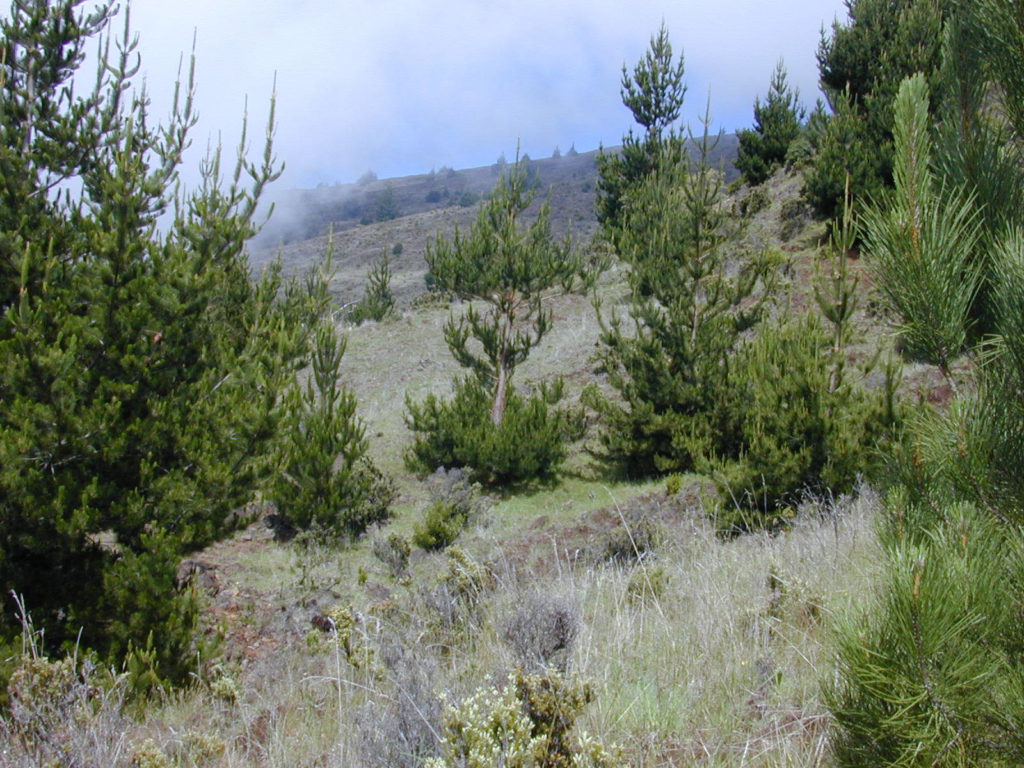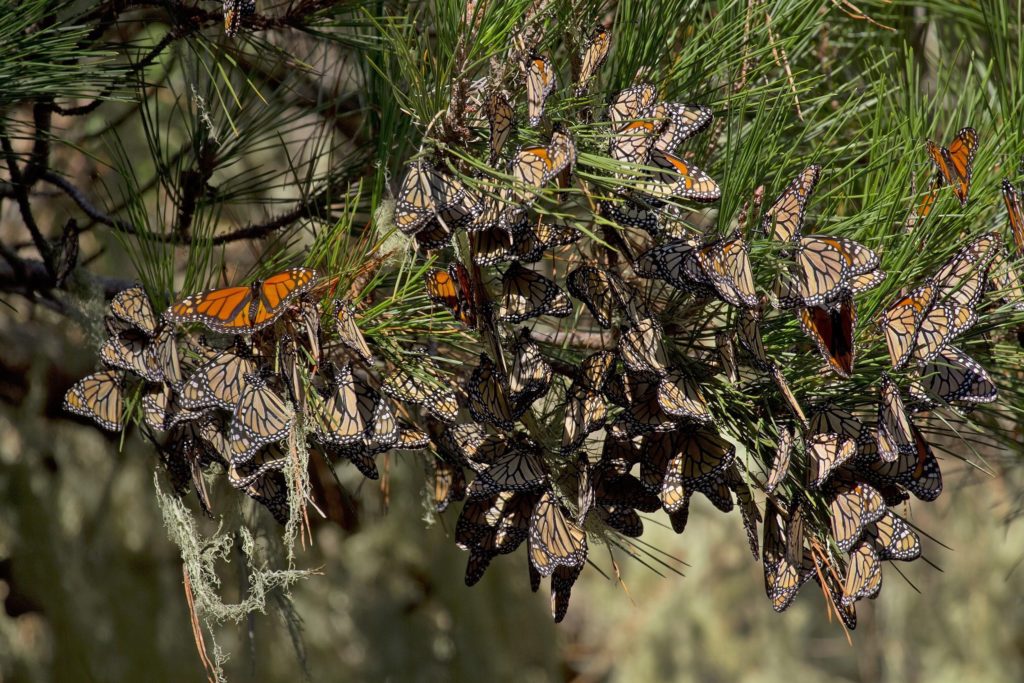- About Us
- Our Work
- Tree Info
- Get Involved
- Blog
- Volunteer
- Support Us
By Canopy Team on September 3, 2018

Photo courtesy Forest & Kim Starr, Flickr
Tree Spotlight Series: Follow along as we learn about the fascinating trees that live among us. This series is in partnership with Rhee Lab in the Plant Biology Department of the Carnegie Institution for Science.
Check out posts in this series featuring the Ginkgo biloba, Douglas fir, Giant sequoia, Chinese tallow, and Silver-dollar gum.
The Monterey pine, Pinus radiata, is the most widely planted pine tree in the world. Although this species is native to the central coast of California, it is the leading introduced tree in Australia, New Zealand, and Spain. It is a fast-growing, coniferous tree that can survive in areas with scarce water resources.
They can peak at 200 feet—about 18 stories—in as little as 20 years. Although there are many similarities between this species and other pine trees, a key difference is that the leaves or “needles” of Monterey pines occur in clusters of three. As for their roots, Monterey pines reach down as far as they physically can, which can measure up to three and a half stories.

The Monterey pine possesses many qualities that are utilized in a variety of ways. Their lumber is used widely in constructing houses and boats. The tree’s pulp can be used to make newsprint. The leaves contain Vitamin C and many animals rely on the tree as a source of food, ranging from goats and deer that eat the leaves, to deer mice and chipmunks that eat the nuts, and even to birds who scour the tree for insects.
Furthermore, the tree serves as a habitat for certain insects, most famously as a winter habitat for Monarch butterflies during their migration to the city of Pacific Grove in California. Finally, the pine resin contains molecules called terpenes, primarily α-Pinene and β-Pinene, whose anti-microbial and anti-inflammatory properties have been noted by studies, explaining the resin’s usage in treating inflammation in joints or muscles and as a salve for burns and sores in native cultures.
In certain countries this tree is regarded as an invasive species, and rightly so. The Monterey pine is a threat to water resources in South Africa because of how deep the plant’s roots dig. In Australia, the tree raises concerns about the loss of native wildlife habitat, a concern that is echoed in Spain, where the shady undergrowth of the Monterey pine does not allow for the existence of shrub.

In a world where we quickly pass judgments of good and bad to whatever we know, the Monterey pine seems to defy this simple categorization: while the species has many uses and is crucial to many ecosystems, it also threatens the diversity of vegetation in specific locations. Regardless, the Monterey pine is something to look out for in its native habitats in California’s central coast.

Ankush Bharadwaj is a 2018 summer intern at the Rhee Lab in the Plant Biology Department of the Carnegie Institution for Science. He is currently an undergraduate student majoring in Microbiology, Immunology, and Molecular Genetics at the University of California, Los Angeles. His hobbies include being outdoors, where he usually spends his time kayaking, hiking, or simply skateboarding around.